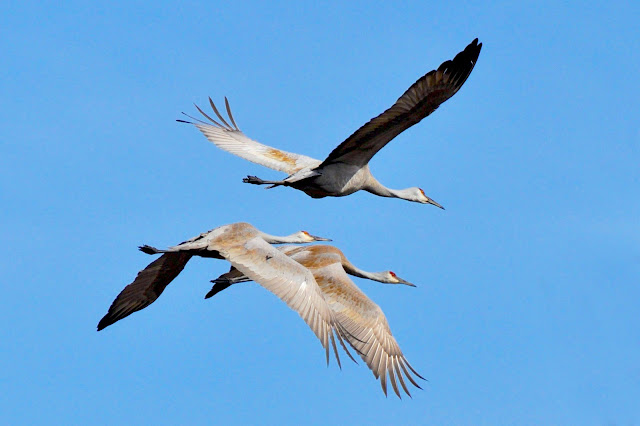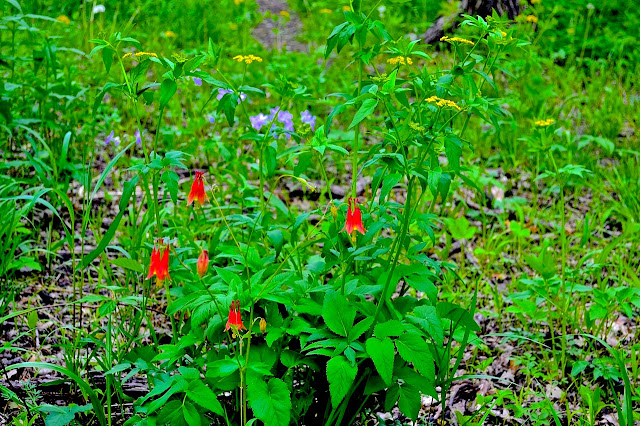On February 28, sandhill cranes were migrating north over Somme Prairie Grove. They jumped the gun. March is the gloriously official beginning of biological spring.
 |
Some of us have begun celebrating six rich seasons that we find more more meaningful and worth celebrating:
Early Spring – March and April
The year begins (Happy New Year!) Late snows are soft and sweet.Early migrant birds arrive.
Frogs head to ephemeral breeding ponds and sing up a storm.
Controlled burns for places missed last fall.
Permanent resident birds pair up and start to build nests. (Woodpeckers, chickadees, cardinals, mourning doves, red-tailed hawks, and more.)
The few, the earliest, flowers bloom.
Late Spring – May and June
Spring flora at its height.Tropical migrant birds return. (Warblers, tanagers, vireos, hummingbirds, buntings, and more.)
Heavenly temperatures.
Most wild babies are born.
Summer – July and August
Wild babies grow full size – but in many cases are still kind of goofy and dependent.
Many people (and ainmals) relish the wilderness most in its delicious mornings and evenings.
Warm-season grasses and wildflowers reach full height
Early Fall – September and October
First cool winds put a spring in people’s steps.Many migrant birds leave for Central and South America.
Fruits, grains, and most seeds ripen (and are eaten and gathered).
Most restoration seeds gathered and prepped for broadcast.
Numbers of birds, mammals, and insects massively greater than in spring.
Gentians cap a growing season of blooms with blue majesty.
Late Fall – November and December
Most restoration seeds blessed by broadcast into the ecosystem.
Warm season grasses die (above ground) and start a second life as fuel for fire. Tree leaves turn bright or somber colors and then, too, carpet the woodlands with fuel.
Fewer and fewer animals. They've migrated, hibernated, or are otherwise gone.
Healing or renewing fires sweep woods and grasslands.
Winter
People and many other mammals live off food stored from the other five seasons.
Winter birds arrive from Canada (“Snowbirds” or juncos, “tree” or tundra sparrows, snowy owls in some years, and more).
The season of brush-cuts and bonfires.
We stewards study, plan, and prepare; cast off hypotheses that no longer make sense; select new ideals and priorities.
Snow and cold prepare wild seeds to germinate in early or late spring.
Then a new year begins.
Like many calendars in many parts of the world, the new year begins with the birth of another season of life and growth.
It's a wonderful world - especially for the people, animals, and plants of the tallgrass woods, savannas, prairies and wetlands.
We celebrate spring.






1 comment:
I can attest to that!
Post a Comment